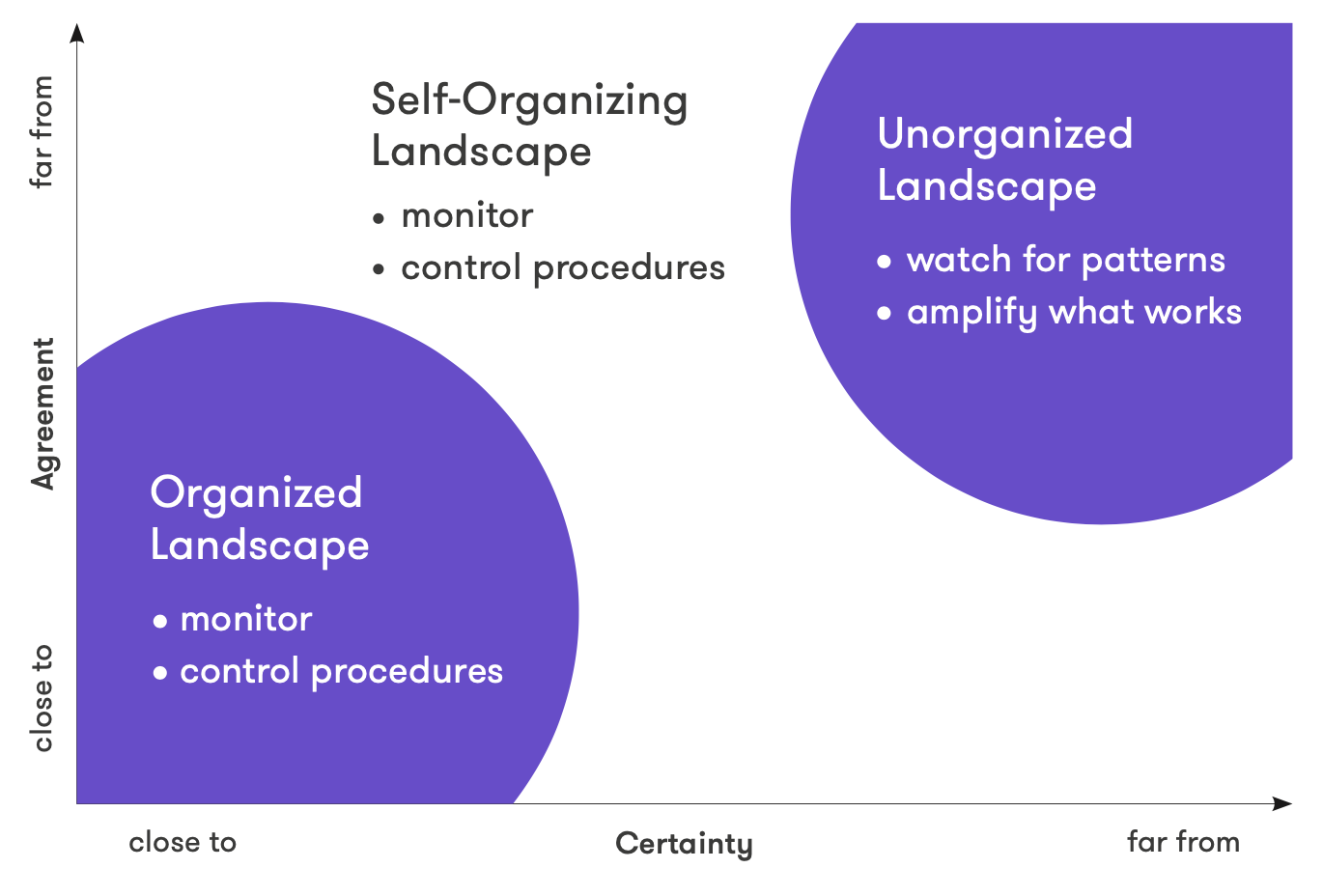
Social learning is the future of L&D — here’s why
It’s no secret that a company’s and its employees’ ability to learn is in direct correlation with business performance. In fact, research shows that organizational learning contributes positively to innovation, competitiveness, and financial results.
However, the problem is that modern organizations are transforming their strategies, business models, and commercial focus areas so rapidly that traditional learning programs are struggling to keep up. And since the pace of change is only going to accelerate, the question is: How should L&D departments and learning providers ready themselves for this new world of work?
In this article, we’ll discuss exactly how organizational learning is changing and the three steps you can take to prepare your L&D function for the future.
How exactly is organizational learning changing?
When we talk about the changing landscape of organizational learning, we like to borrow this diagram from one of our customers, the Human Systems Dynamics Institute.

Original image source: Interaction Institute
Starting from the axis, which depicts an environment characterized by high certainty and agreement, the diagram cleverly illustrates three organizational landscapes:
- The organized landscape,
- The self-organizing landscape, and
- The unorganized landscape
The organized landscape refers to those areas of activity where there is agreement and a high degree of predictability (think the payroll process). The unorganizing landscape refers to those areas that are more random and surprising (for example, when a new team comes together for the first time). In between lies the self-organizing zone, where the system begins to sort out and respond to its environment.
There are several pioneering organizations in an array of sectors — profit and nonprofit — that are already operating with significantly new structures and management practices in the self-organizing landscape. A great example of this are organizations like Patagonia (apparel, United States) and Buurtzorg (healthcare, Netherlands) who have adopted the Teal organizing method.
A company’s position in this landscape has huge implications on the way organizational learning should be facilitated. While for the companies in the lower left corner it’s okay to focus on learning hard skills like how to use a specific piece of software using structured learning materials like pre-recorded e-learning courses, businesses in the top right corner need more than skills-based learning to survive.
In an unpredictable environment where there’s little agreement and certainty, learning how to use Excel, Salesforce, or SAP simply doesn’t cut it anymore. Instead, organizations like these must invest in building up enduring capabilities such as innovation, leadership, and communications, which are highly transferable but can’t be taught using traditional learning methods.
But how then, should companies prepare themselves for this new paradigm?
The best ways to adopt these capabilities are a) learning by doing and b) learning through reflection. And because there really are no right or wrong answers for how to innovate, communicate, or lead in complexity, modern organizations are starting to realize that learning should be democratized. In other words, the answer is social learning.
The three prerequisites for succeeding in social learning
Now that we know why most organizations need to move towards social learning, the next question we need to answer is this: What does it take to make social learning a success in your organization?
If you ask us, the answer is a combination of three things:
1. Mindset
To truly succeed in moving to the top right corner of the landscape diagram, organizations must first let go of their existing notions of learning. Once that’s done, it’s time to undergo a mindset shift that entails three steps:
- Firstly, learning should be seen as something that belongs to the individual, rather than the organization.
- Secondly, it should be seen as a journey that spans the individual’s whole career, rather than a collection of one-off learning events.
- And finally, much of learning should be focused on building enduring capabilities and transferable behaviors rather than hard skills.
2. Leadership
The second step in adopting social learning is to adjust the organization’s leadership style to a more facilitative and inclusive approach. Instead of the all-knowing leader, companies should invest in making leadership a coaching function that helps employees find the right contacts, resources, and answers in self-organizing and lightly facilitated groups.
This leadership style is similar to servant leadership, which builds on the idea that leaders are first and foremost responsible for the well-being and growth of their team members. Instead of trying to tell other people what to do, they are serving the community and removing obstacles from their teams’ way so that others can focus on what they do best.
3. Technology
With the right mindset and a modern leadership model in place, it’s time to start thinking about the day-to-day, i.e. how can L&D departments support the learning of complex capabilities in groups.
And while there are no right or wrong answers, one of the most effective ways to remove organizational silos between departments, time zones, and geographically dispersed offices is by introducing collaborative learning technologies.
Such technologies—social learning platform Howspace included—allow employees to build and cultivate organic communities-of-practice around the concepts and topics they’re interested in developing.
Bringing it all together
In rapidly changing environments, companies can no longer rely on skills-based learning alone. Instead, social learning offers L&D departments a chance to build enduring capabilities such as teaming, critical thinking, and adaptive reasoning.
However, for social learning to become an effective part of the organization’s culture, L&D departments must invest in three things: a company-wide mindset shift, retraining their leaders to follow the principles of servant leadership, and collaborative technologies that help employees create active learning communities with their peers.
Psst! If you’d like to learn more about the 8 trends that are shaping the organizational learning landscape, you can now download your free copy of the guide: 8 ways to boost engagement in virtual organizational learning.
You might be interested in these as well
View all
E-learning vs. blended learning — definitions, differences & use cases
The terms e-learning and blended learning are often used interchangeably, which is hardly a problem in casual conversation. However, since […]

10 Ways Howspace Uses Howspace
Explore 10 fun and creative ways that we at Howspace actually use Howspace to collaborate and get work done!

The future of learning: How to design learning experiences for the hybrid world
It’s no secret: work as we know it has changed for good. COVID-19, the Great Resignation, and the rise of […]